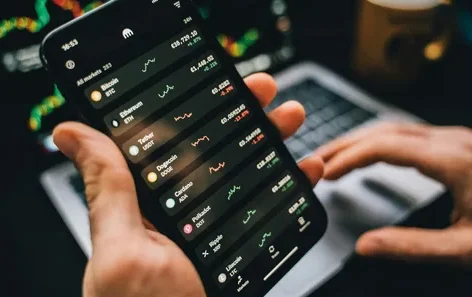Finding the right cryptocurrency exchange with lowest fees can significantly impact your trading profits and investment returns. With hundreds of crypto platforms available today, commission structures, withdrawal fees, and hidden charges vary dramatically across different exchanges. Whether you’re a beginner looking to buy your first Bitcoin or an experienced trader executing multiple daily transactions, understanding fee structures is crucial for maximizing your crypto investments.
The cryptocurrency market has evolved tremendously, with trading volumes reaching unprecedented levels. However, high fees can quickly erode your profits, especially for frequent traders or those dealing with smaller amounts. This comprehensive guide examines the most cost-effective crypto exchanges, helping you identify platforms that offer competitive rates without compromising on security or functionality.
Why Trading Fees Matter in Cryptocurrency Trading
Trading fees directly impact your investment returns, and even small percentage differences can result in substantial savings over time. When you’re actively trading cryptocurrencies, these costs accumulate quickly, making fee comparison an essential part of your trading strategy.
Most cryptocurrency exchanges charge fees in several ways: trading commissions (maker and taker fees), deposit and withdrawal charges, network fees, and sometimes additional services like margin trading or staking. Understanding these fee structures helps you make informed decisions about which platform best suits your trading style and investment goals.
Top Cryptocurrency Exchange with Lowest Fees in 2025

Binance: Global Leader in Low-Cost Trading
Binance consistently ranks as one of the most affordable cryptocurrency exchanges worldwide. With spot trading fees starting at just 0.1% for both makers and takers, Binance offers competitive rates that decrease further with higher trading volumes or when using their native BNB token for fee payments.
The exchange provides a tiered fee structure based on your 30-day trading volume and BNB holdings. VIP users can enjoy fees as low as 0.02%, making it extremely attractive for high-volume traders. Binance also offers zero-fee trading pairs and regular promotional campaigns that further reduce trading costs.
KuCoin: Competitive Fees with Advanced Features
KuCoin operates with a standard fee structure of 0.1% for both makers and takers, similar to Binance. However, what sets KuCoin apart is their extensive altcoin selection and innovative trading features. The platform offers significant fee discounts when using their native KCS token, with reductions up to 20%.
The exchange also features a unique fee-sharing program where KCS holders receive daily bonuses from the platform’s trading fees. This creates an additional incentive for users to hold the native token while benefiting from reduced trading costs.
Kraken: Transparent Fee Structure for Serious Traders
Kraken maintains one of the most transparent fee structures in the cryptocurrency industry. Starting at 0.16% for takers and 0.26% for makers, these fees decrease significantly based on your 30-day trading volume. Professional traders can achieve fees as low as 0.00% for makers and 0.10% for takers at the highest tier.
What makes Kraken particularly attractive is their straightforward approach to fees with no hidden charges. The platform clearly displays all costs upfront, including deposit, withdrawal, and margin trading fees, allowing traders to calculate their total expenses accurately.
Comparing Different Fee Types Across Exchanges
Trading Fees: Maker vs. Taker
Most exchanges differentiate between maker and taker fees. Makers provide liquidity to the order book by placing limit orders, while takers remove liquidity by executing market orders or filling existing limit orders. Typically, makers pay lower fees than takers as exchanges incentivize liquidity provision.
Understanding this distinction is crucial when selecting a cryptocurrency exchange with lowest fees. If you primarily use limit orders and provide liquidity, platforms favoring makers might be more cost-effective. Conversely, if you prefer market orders for quick execution, exchanges with low taker fees should be prioritized.
Deposit and Withdrawal Fees
While trading fees often receive the most attention, deposit and withdrawal costs can significantly impact your overall expenses. Some exchanges offer free fiat deposits via bank transfers but charge for credit card purchases. Cryptocurrency withdrawals typically involve network fees plus potential platform charges.
Leading low-fee exchanges like Binance and KuCoin often absorb network fees for popular cryptocurrencies, while others pass these costs directly to users. When comparing exchanges, always factor in these additional expenses, especially if you frequently move funds between platforms.
Factors to Consider Beyond Just Low Fees
Security and Regulation
While finding the cheapest fees is important, security should never be compromised. The best cryptocurrency exchange with lowest fees must also provide robust security measures including cold storage, two-factor authentication, and regulatory compliance. Several low-cost exchanges have faced security breaches, resulting in significant user losses.
Look for exchanges that maintain proper licensing, undergo regular security audits, and carry insurance coverage for digital assets. Platforms like Kraken and Coinbase Pro, while not always the cheapest, offer institutional-grade security that justifies slightly higher fees for many users.
Liquidity and Trading Pairs
Low fees mean little if an exchange lacks sufficient liquidity or doesn’t support your desired trading pairs. Major exchanges like Binance and Kraken offer extensive cryptocurrency selections with deep order books, ensuring you can execute trades at fair market prices without significant slippage.
Smaller exchanges might advertise lower fees but suffer from poor liquidity, resulting in worse execution prices that offset any fee savings. Always consider the total cost of trading, including potential price impact, when evaluating different platforms.
User Experience and Customer Support
The trading interface and customer support quality can significantly impact your overall experience. While hunting for the lowest fees, don’t overlook platforms that offer intuitive interfaces, reliable uptime, and responsive customer service.
Some budget-focused exchanges compromise on user experience or support quality. However, leading platforms like Binance and KuCoin have invested heavily in user-friendly interfaces and comprehensive customer support, providing excellent value despite competitive pricing.
Advanced Trading Features and Their Costs
Margin Trading and Derivatives
For traders interested in leveraged positions or derivatives, fee structures become more complex. Margin trading typically involves additional costs including borrowing fees, funding rates, and potentially higher trading commissions. Some exchanges offer competitive spot trading fees but charge premium rates for advanced features.
Binance Futures, for example, provides some of the lowest futures trading fees in the industry, starting at 0.02% for makers and 0.04% for takers. These rates, combined with high leverage options and extensive derivative products, make it attractive for sophisticated traders seeking cost-effective advanced trading tools.
Staking and Yield Generation
Many modern exchanges offer staking services and yield-generating products that can help offset trading fees. Platforms like Kraken and Binance provide competitive staking rewards for various cryptocurrencies, allowing users to earn passive income while holding assets.
Consider these additional earning opportunities when evaluating the total value proposition of different exchanges. Sometimes slightly higher trading fees can be justified if the platform offers superior staking rewards or other yield-generating services.
Regional Considerations for Low-Fee Crypto Exchanges
United States Regulations and Available Exchanges
US-based traders face unique challenges due to regulatory restrictions. Many global exchanges with the lowest fees, such as Binance, have limited or no access for US customers. American traders must choose from compliant platforms like Coinbase Pro (now Advanced Trade), Kraken, or Binance.US.
Among US-available options, Kraken typically offers the most competitive fee structure for high-volume traders, while Coinbase Advanced Trade provides better rates than its basic platform. Binance.US, despite being separate from the global platform, still maintains competitive pricing for American users.
European and International Markets
European traders generally have access to a broader range of low-fee exchanges, including the global Binance platform, KuCoin, and regional alternatives like Bitstamp. EU regulations like MiCA (Markets in Crypto-Assets) are shaping the landscape, potentially affecting fee structures as exchanges adapt to compliance requirements.
International traders outside major regulatory jurisdictions often have the most options, including access to the lowest-fee platforms globally. However, they should still prioritize exchanges with strong security track records and reliable customer support, even if fees are slightly higher.
Fee Optimization Strategies

Volume-Based Discounts and VIP Programs
Most major exchanges offer tiered fee structures based on 30-day trading volumes. Understanding these tiers and planning your trading activity accordingly can result in significant savings. For example, Binance’s VIP program can reduce fees by up to 80% for the highest-tier users.
Consider consolidating your trading activity on a single platform to achieve higher volume tiers faster. Some traders even coordinate their activities to reach the next fee tier, especially when the discount threshold is within reach.
Native Token Benefits
Many exchanges offer substantial fee discounts when using their native tokens for payment. Binance (BNB), KuCoin (KCS), and other platforms provide 10-25% fee reductions when using their respective tokens. These discounts, combined with potential token appreciation, can significantly reduce overall trading costs.
However, consider the risks associated with holding exchange tokens, including concentration risk and potential regulatory issues. Diversification remains important even when pursuing fee optimization strategies.
Hidden Fees and Costs to Watch For
Spread and Price Slippage
While advertised trading fees might be low, the actual cost of trading includes bid-ask spreads and potential slippage, especially on less liquid exchanges. Major platforms typically offer tighter spreads due to higher liquidity, resulting in better effective prices despite potentially higher nominal fees.
Always compare the total cost of trades, not just the commission rates. Small exchanges might advertise zero fees but make money through wider spreads, resulting in higher actual costs for traders.
Currency Conversion and International Fees
For traders dealing with multiple fiat currencies or frequently converting between different assets, currency conversion fees can add up quickly. Some exchanges offer competitive trading fees but charge premium rates for fiat conversions or international transfers.
Consider the total ecosystem costs, especially if you frequently deposit or withdraw funds in different currencies. Platforms with integrated banking relationships often provide better conversion rates and lower international transfer fees.
Seasonal Promotions and Temporary Offers
Limited-Time Fee Reductions
Many exchanges run promotional campaigns offering reduced or zero trading fees for limited periods. While these promotions can provide excellent short-term value, avoid basing long-term platform selection solely on temporary offers.
However, these promotions can be valuable for testing new platforms or executing large trades when significant fee savings are available. Always read the terms and conditions carefully, as promotional rates often come with volume limits or other restrictions.
Referral Programs and Bonus Structures
Referral programs can provide ongoing fee discounts or rebates, effectively reducing your trading costs over time. Some platforms offer lifetime commission reductions for both referrers and referees, creating long-term value beyond initial promotions.
Consider joining communities or finding referral partners to maximize these benefits. However, never compromise on security or platform quality solely for referral bonuses.
Future Trends in Cryptocurrency Exchange Fees
The cryptocurrency exchange landscape continues evolving, with several trends likely to impact fee structures. Increased competition is driving fees lower across the industry, while regulatory compliance costs may create upward pressure on some charges.
Decentralized exchanges (DEXs) are also challenging traditional fee models, offering different cost structures based on automated market makers and liquidity pools rather than order books. While DEX fees can be lower for some trades, network gas fees and slippage often make centralized exchanges more cost-effective for smaller transactions.
Integration with traditional financial services and the growth of institutional trading are creating new fee models and volume tiers. Exchanges are increasingly offering customized pricing for different user segments, from retail traders to institutional clients.
Conclusion
Selecting the right cryptocurrency exchange with lowest fees requires balancing cost considerations with security, functionality, and reliability. While platforms like Binance, KuCoin, and Kraken offer some of the most competitive fee structures in the industry, the best choice depends on your specific trading needs, location, and risk tolerance.
Remember that the cheapest option isn’t always the best value. Consider the total cost of trading, including spreads, withdrawal fees, and potential security risks. Established exchanges with slightly higher fees often provide better overall value through superior security, liquidity, and customer support.
Before committing to any platform, take advantage of demo accounts or start with small amounts to test the trading experience. Many exchanges also offer promotional rates for new users, allowing you to evaluate their services at reduced costs.
Ready to start trading with minimal fees? Research the platforms mentioned in this guide, compare their current fee structures for your specific trading patterns, and choose the cryptocurrency exchange with lowest fees that best matches your needs and security requirements.

















